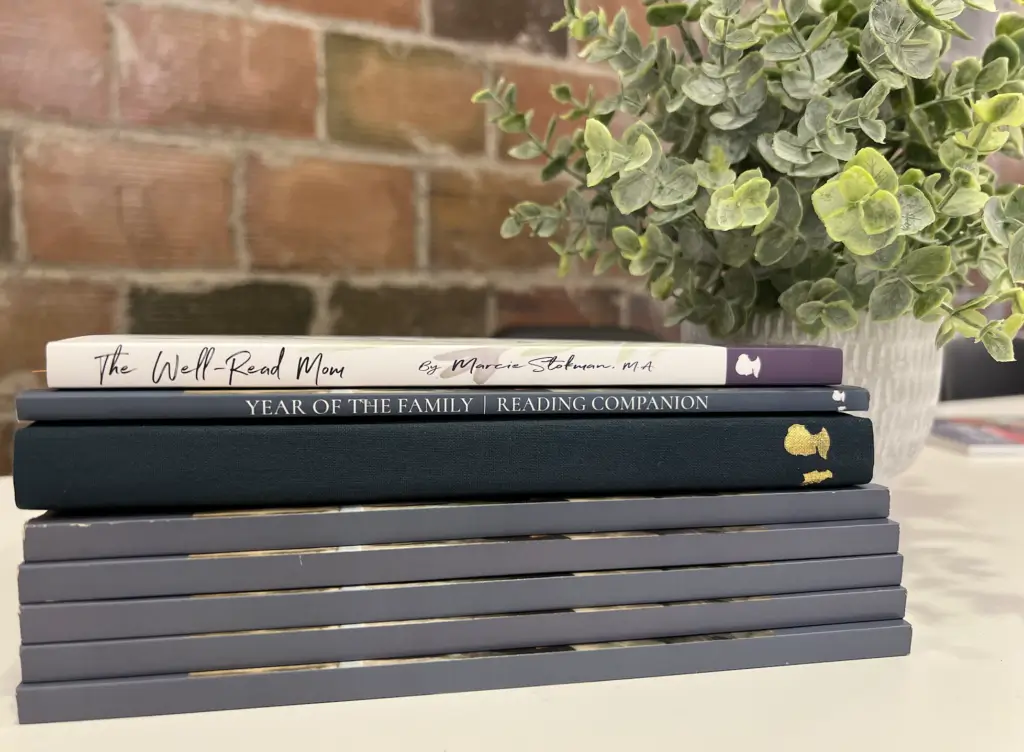Grace in the Midst of Evil: How Difficult Literature Can Elevate Our Understanding
By Megan Keyser
When I consider what entices me to read a literary work, I find myself focusing on specific criteria: Is the reading style pleasurable? Is the content informative or inspiring? Does it bring joy, peace, or truth to my spirit? After all, there are only so many hours in a day to devote to reading (however earnestly I wish there were more). A busy mother must be somewhat picky in her literary decisions between juggling work and kids’ schedules, chores, and errands. While it is natural to have partialities—favorite authors, subject matter, or writing styles—there is merit in persevering through works that do not immediately resonate with us or perhaps, even repel us. Indeed, plenty of literary works are devoid of value and should be something we avoid. However, a myriad of offerings exists that, while they may jar our sensibilities, still relate universal truths.

Many (including myself and several of my close friends) recently struggled with this month’s reading selection: Flannery O’Connor’s novel, The Violent Bear It Away. I suspect that, for many of us, who are confronted daily with the spiritual violence of an age largely bereft of godliness, decorum, or even common decency, facing a novel that brutally touches on the grim and even shocking realities of evil, can be a bit off-putting. Our souls yearn for uplifting fare that will encourage, motivate, or soothe our beleaguered selves. So, what are we to make of such a work?
First, when determining a work of fiction’s value (or lack thereof), we must distinguish between a novel that showcases violence for its glorification and one that depicts such evil for our improvement. While The Violent Bear It Away undoubtedly contains disturbing scenarios, persons, and events, O’Connor is not seeking to glorify the violence and ugliness. On the contrary, she attempts to show sin in all its blatant horror. This technique should be apparent in that no character (except perhaps the Bishop, who certainly garners our sympathy) is even remotely admirable or noble. Rather than desiring to emulate these fictitious individuals, we loathe the selfishness they primarily exude. But just why is O’Connor showcasing evil? Why not emphasize the beautiful instead?
After the horrors of two World Wars, the rejection of Victorian social mores, and the insidious dismantling of Western culture, Christian thinkers of the early and mid-Twentieth century faced a problem. How can one speak Christian Truth in an era that increasingly and emphatically expresses disdain toward Christ and His Church? O’Connor was one such artist. In O’Connor’s estimation, a new cultural landscape necessitated a new type of literary evangelism that met the thoughtful reader’s new moral vision head-on, with blunt force, rather than saccharine niceties or religious platitudes. Flannery asserted: “When you can assume that your audience holds the same beliefs you do, you can relax and use more normal means of talking to it; when you have to assume that it does not, then you have to make your vision apparent by shock—to the hard of hearing you shout, and for the almost-blind you draw large and startling figures.” Certainly, O’Connor’s work is rife with the grotesque. In light of her words, we must conclude that the shocking quality of her literature indicates an utterly grim assessment of modern society’s pervasive spiritual blindness. But while that appraisal sounds nearly despairing for our culture, it is essential to note that a person can only be shocked by evil if a shred of goodness or a standard for truth—however obscured—remains in his soul. Responding to her predilection for writing about unnerving figures, O’Connor wrote: “Whenever I’m asked why Southern writers particularly have a penchant for writing about freaks, I say it is because we are still able to recognize one. To be able to recognize a freak, you have to have some conception of the whole man, and in the South the general conception of man is still, in the main, theological… I think it is safe to say that while the South is hardly Christ-centered, it is most certainly Christ-haunted. The Southerner, who isn’t convinced of it, is very much afraid that he may have been formed in the image and likeness of God. Ghosts can be very fierce and instructive.” When a reader encounters horrors, it prompts speculations about the nature of horror itself and, contrastingly, the nature of the good. Why do we find some person or act repulsive? To what standard are we appealing? If truth is merely subjective, why do we find certain evils universally (or at least commonly) abhorrent? And if nothing is despicable, what have we become?
For those left stunned at the gruesome events depicted in The Violent Bear It Away, scratching our heads as to what O’Connor was possibly trying to communicate, the answer is simple: quite a bit. The book is replete with careful symbolism and deep theological musings cloaked under a veil of mystery. The podcast on the WRM website with Marcie Stokman and guest speaker Brother Leven Harton, OSB, and countless literary essays—some of which exist HERE and HERE—masterfully reveal the profundity of this symbolism. One of the benefits of tackling works whose themes or messages are not immediately apparent or shock our sensibilities is that such writing often prompts penetrating contemplation and prolonged musings over the material. The reader must force herself to meditate on the work and grapple with its hidden meaning, digging deep within the soul and mind to discover treasures of truth. Though my reading group unanimously struggled to enjoy this work, the ensuing discussion on a complex piece was astounding as we worked together to understand the divine wisdom O’Connor was surreptitiously communicating and applying it to our understanding and lives.

Finally, though some of us may never possess a deep and abiding affinity for the work of Flannery O’Connor, an important lesson can be garnered by both reading her work and examining her motivations. By reading her work, our literary appreciation has an opportunity for growth as we extend our sensibilities beyond our normal or preferred limits. And because her themes are not transparent, we increasingly refine our literary understanding as we delve deeply into motifs and symbols that initially baffle us. Though we may always have our favorite authors or genres, there is a beauty in challenging ourselves with new and surprising literature. The variety of literature recalls the magnificent diversity of the Saints to my mind. My mother always emphasized the generosity of a Faith that offers us such a stunning array of Saints to speak to our souls, vocational states, circumstances, or temperaments. While one person (like myself) may yearn for the gentle spirituality of a Saint Francis de Sales, another may seek the unparalleled logical dexterity of Aquinas or, conversely, the simplicity of Saint Bernadette or Saint Martin de Porres. Still, others need the direct intensity of Saint John the Baptist or Saint John Vianney to rattle their complacency or hard-headedness. Similarly, authors—particularly great authors—have unique capabilities to meet specific souls. And while they might vary in their style or delivery in imparting a message, what remains constant is the truth they seek to communicate.
While my appreciation for Flannery O’Connor’s writing style and methodology might never approach my esteem for someone like Jane Austen, I am grateful for the opportunity to partake of her particular literary offerings. As part of this Well-Read Mom community, the plethora of authors and selections available to us should be a reason for rejoicing, particularly as we witness the variety of ways in which distinctive authors memorably point to the truth. It may not initially resonate with our inclinations. Still, if we force ourselves to examine a work carefully and thoughtfully, we may be surprised by how beautifully, however differently, these artists illuminate universal truth.
About Well-Read Mom
For our Tenth Anniversary, the reading list put together by Well-Read Mom reflects on the theme of family. In Well-Read Mom we desire to create a place for women, not to escape from family life and work, but to experience a kind of leisure through friendship and literature so that women can return to their lives with a renewed vision and vigor. By reading books together, we help sustain a tradition of reading, which is a gift not only to our families but to the world. We hope you’ll join Well-Read Mom for our Year of the Family. Find out more.


